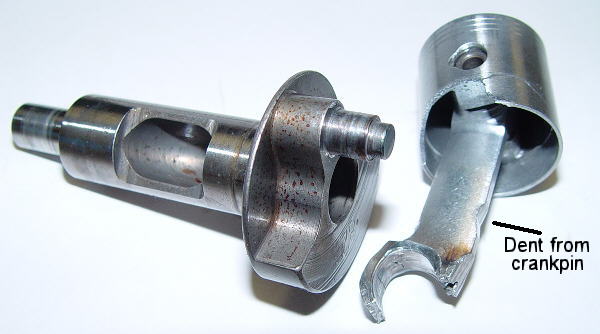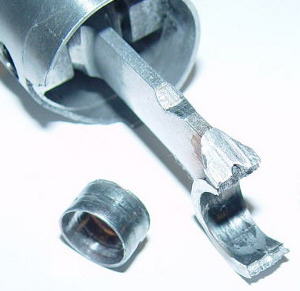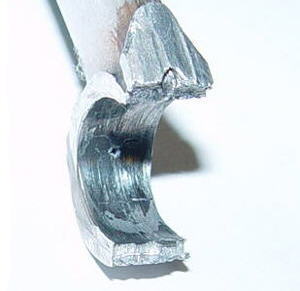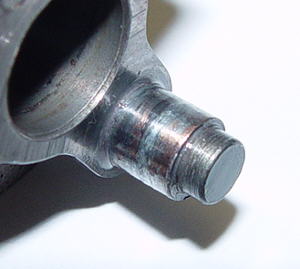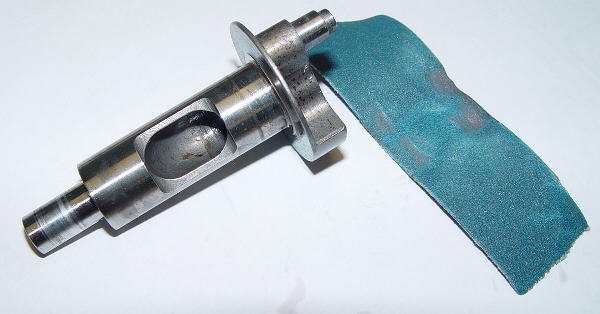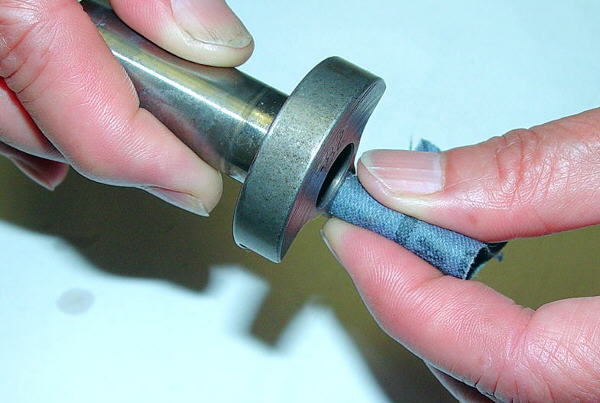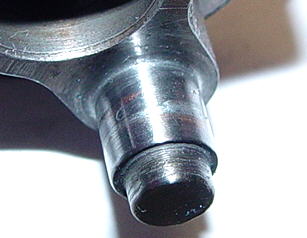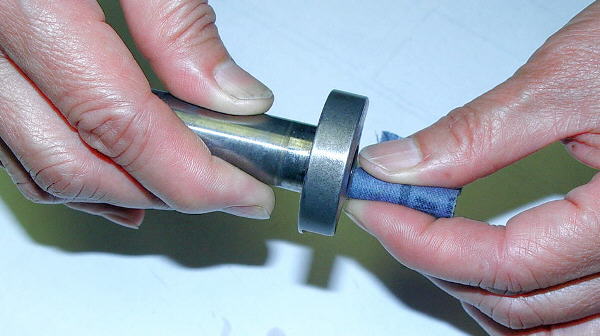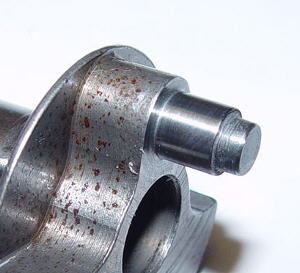|
When the
tensile strength is lowered from heat the material breaks.
Another
scenario can also occur. The bushing can heat up the rod and
damage the heat treatment of the aluminum thus lowering the
strength. So the rod may not break when the damage occurred,
it happens when the rod is under extreme stress which the
rod could have handled if it was in its original heat treated
condition.
An another
possibility is the bushing could have spun just enough to
misalign the oil holes rendering them non functional. This
lack of oil will cause the overheating to occur when the rod/bushing
is stressed at high rpm... and here comes the break, for no
apparent reason.
|

